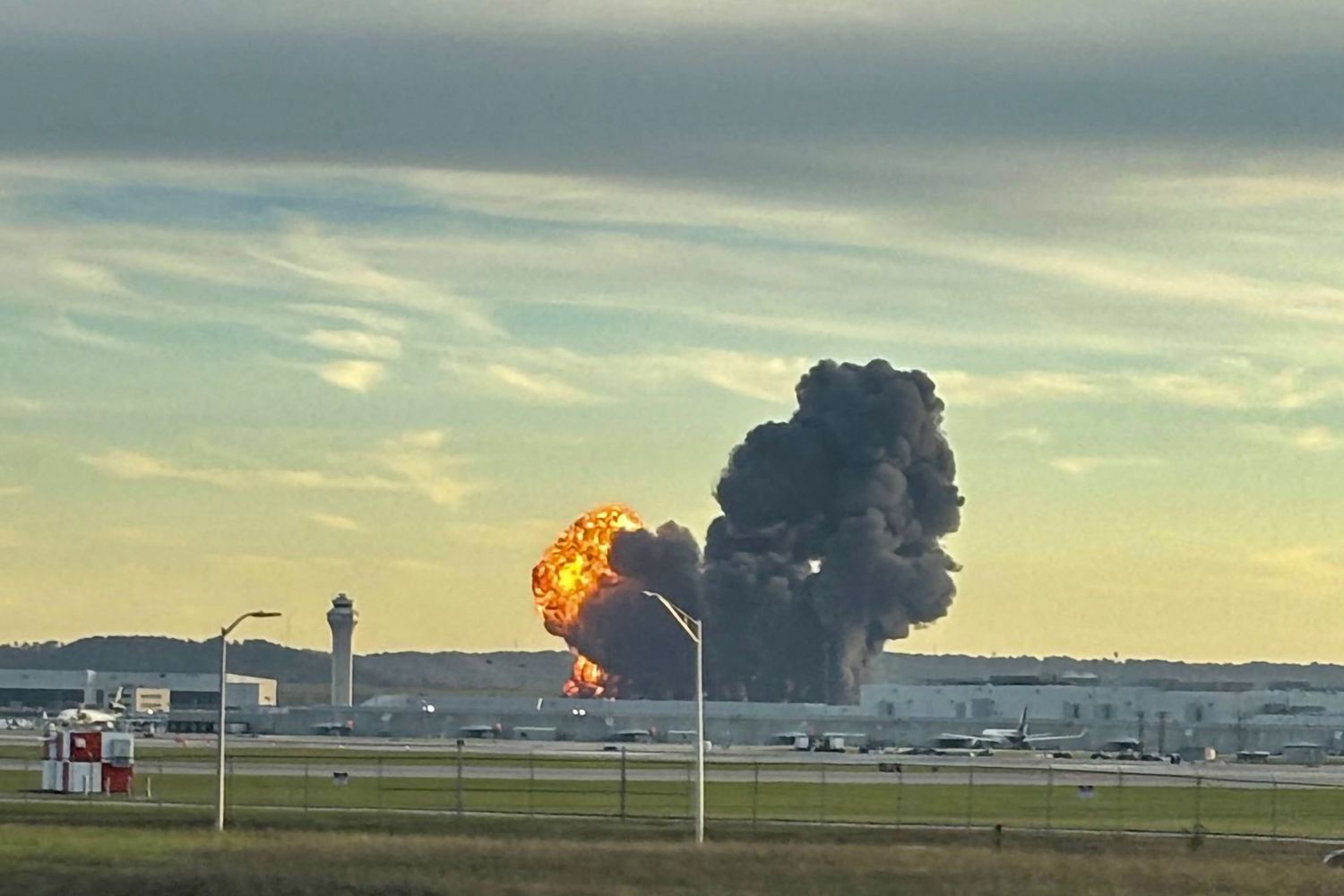Everything We Know About the UPS Plane Crash in Louisville That Killed At Least 7
A UPS cargo plane crashed shortly after takeoff from Louisville Muhammad Ali International Airport on Tuesday evening, resulting in at least seven deaths and drawing widespread attention to air safety concerns. The incident occurred around 5:20 p.m. local time, impacting the local area and prompting a swift response from emergency services.
Details of the Crash Sequence
UPS Flight 2976, an MD-11 freighter headed to Honolulu, reached an altitude of about 175 feet before descending rapidly, based on initial flight tracking data. Video from nearby cameras shows fire emerging from the left wing, followed by the plane striking the ground near industrial sites. The impact damaged buildings at Kentucky Petroleum Recycling and Grade A Auto Parts, with a nearby Ford plant unaffected.
The three crew members on the flight were killed, and four people on the ground also died, bringing the total to seven confirmed fatalities as of Wednesday morning. Eleven others were injured, including two in critical condition. Recovery efforts continued overnight at the site.
Kentucky Governor Andy Beshear addressed the incident in a press conference. "Anybody who has seen the images in the video knows how violent this crash is," he said. He added, "This is going to be a tough day for Kentucky… as of this morning we still have at least seven fatalities—though sadly we believe that number will grow." The crash affected UPS employees at the company's Worldport facility, where staff checked on one another following the event.
Jefferson County Public Schools canceled classes on Wednesday to support community needs. A shelter-in-place order was issued for a quarter-mile radius around the site due to the fire and debris.
Emergency Response and Investigation
More than 200 first responders from various agencies arrived to manage the fire, which covered an area the size of a city block. The response included road closures and evacuations in the vicinity.
The National Transportation Safety Board (NTSB) and Federal Aviation Administration (FAA) launched an investigation, sending a team of 28 NTSB specialists to the scene on Wednesday. Boeing, the manufacturer involved in the MD-11 design, agreed to provide technical support. Louisville Mayor Craig Greenberg noted the extensive impact, stating on social media that the search area was large and advising residents to stay away.
The airport resumed operations Wednesday morning, though the crash site remained secured. A family reunification center was set up at the Louisville Metro Police Training Academy. Initial environmental checks found no hazardous air quality issues, but officials advised against touching debris.
Overview of the Aircraft and Operations
The MD-11 freighter carried standard cargo and about 38,000 pounds of fuel, with no hazardous materials reported. Observations from videos suggest the fire started in the left engine area, but the cause remains under review.
UPS's Louisville hub handles over two million packages daily, peaking at 416,000 per hour. Operations were paused temporarily, with rerouting in place to address delays. No specific resumption date has been announced.
Greg Feith, a former NTSB investigator, commented on the MD-11's handling requirements during takeoff, noting its design can affect stability if not managed precisely, based on past cases. The flight data and voice recorders will be key to the analysis.
Financial Implications: Potential Impact on Shipping Costs
The crash disrupts UPS's $100 billion logistics network, where the Louisville hub processes around 20% of U.S. air cargo. Such interruptions often lead to rerouting expenses estimated at $50 million or higher in the immediate term, according to industry estimates.
These costs can result in added fees for customers, such as surge charges on express services, which may increase by 10% to 20% during peak periods like the holidays. For consumers, this could raise the price of next-day deliveries from platforms like Amazon.
Benjamin Hartford, a logistics analyst with experience at Baird and Mastery Logistics, explained that similar disruptions have reduced carrier profit margins by up to 15% in the past, leading to sustained rate adjustments. For instance, one retailer faced $2.5 million in additional costs from a prior hub delay and increased customer prices by 5% to offset it. Last year, U.S. shoppers paid $8.5 billion in unexpected delivery fees, up 12% from the previous year.
To navigate this, consumers can use tools like ShipStation to compare carriers and opt for ground shipping options, which might save $5 to $10 per package by avoiding air routes. Bundling shipments locally through apps like Roadie can further reduce reliance on affected networks.

An aerial image captures the devastating aftermath of the UPS cargo plane explosion in Louisville, where wreckage and flames stretch across a city block as rescuers search for victims.
Context Within Aviation Challenges
The event occurs amid broader issues in U.S. air traffic control, including staffing shortages that have increased workloads. Cargo volumes have grown 7% annually, adding pressure to operations. Investigators will examine these factors.
UPS and Boeing issued statements expressing condolences and committing to the investigation. U.S. Transportation Secretary Sean Duffy shared a message of support for those affected. Counseling services are available for UPS's 20,000 local workers.
Next Steps in the Investigation and Recovery
The NTSB probe will review data recorders, maintenance records, and training over the coming months. The site cleanup continues, with flights operating normally at the airport.
This incident highlights ongoing safety considerations in cargo aviation. Updates will follow as new details emerge.
Key Questions From Readers
What Caused the UPS MD-11 Crash in Louisville?
Investigators from the NTSB and FAA are still determining the exact cause, but early video evidence points to a fire originating in the left engine shortly after takeoff. The MD-11 reached only 175 feet before descending, possibly due to engine failure, bird strike, or handling issues related to the aircraft's design. Full analysis of the black boxes and wreckage will take months to confirm.
How Could the UPS Crash Affect Holiday Shipping and Costs?
The Louisville hub's temporary shutdown could delay up to 20% of UPS's U.S. air cargo, leading to reroutes that add $50 million in costs. This may trigger 10-20% surcharges on express shipping, raising prices for holiday deliveries. Consumers might see next-day fees climb, but switching to ground options via FedEx or USPS could save $5-10 per package and avoid delays.
How Safe Are MD-11 Freighters in Current Operations?
MD-11s are reliable for cargo but have a history of takeoff challenges due to their aft-heavy design, requiring precise piloting. Past incidents highlight stability risks, yet strict maintenance and training keep them in service. UPS operates them safely overall, and this crash will prompt reviews to enhance protocols, with no immediate fleet grounding.















